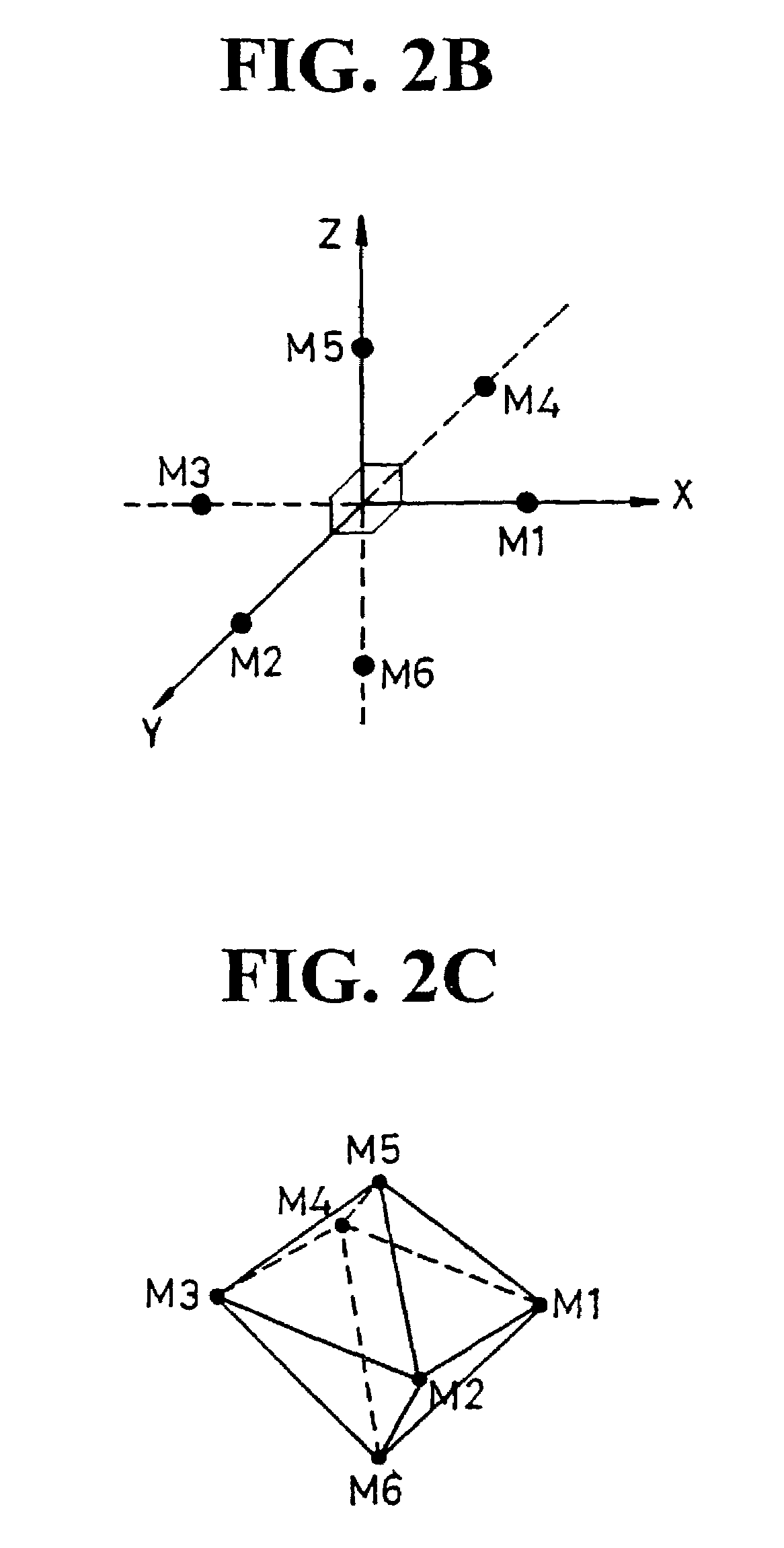Passive sound telemetry system and method and operating toy using the same
a technology of sound telemetry and operating toy, which is applied in the direction of direction/deviation determination system, remote control toy, instruments, etc., can solve the problems of loss and error of time in the rectification process of sound signal and peak value detection process, heighten accuracy, and reduce measurement accuracy, so as to achieve compact measurement equipment
- Summary
- Abstract
- Description
- Claims
- Application Information
AI Technical Summary
Benefits of technology
Problems solved by technology
Method used
Image
Examples
Embodiment Construction
[0033]Preferred embodiments of the present invention will be described in more detail with reference to the accompanying drawings.
[0034]First, a passive sound telemetry according to the present invention uses a structure where first through fourth microphones M1–M4 as at least three or preferably four acoustic detection sensors are disposed in a square or tetragon preferably, each side of which has a predetermined length L as shown in FIG. 1, when an angle θ and a distance R with respect to a sound source S over 360 degrees from one spot on the two-dimensional space.
[0035]The above disposition of the four first through fourth microphones M1–M4 takes into consideration that the sound wave generated from a sound source S propagates as a substantially circular wave, and thus, an arrival time sequence is determined according to a direction opposing the sound source S in the sound wave reaching the four first through fourth microphones M1–M4, and the sound wave having a relative time dif...
PUM
 Login to View More
Login to View More Abstract
Description
Claims
Application Information
 Login to View More
Login to View More - R&D
- Intellectual Property
- Life Sciences
- Materials
- Tech Scout
- Unparalleled Data Quality
- Higher Quality Content
- 60% Fewer Hallucinations
Browse by: Latest US Patents, China's latest patents, Technical Efficacy Thesaurus, Application Domain, Technology Topic, Popular Technical Reports.
© 2025 PatSnap. All rights reserved.Legal|Privacy policy|Modern Slavery Act Transparency Statement|Sitemap|About US| Contact US: help@patsnap.com



